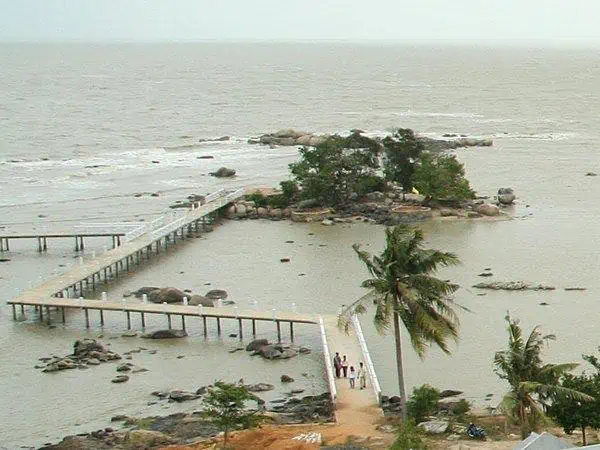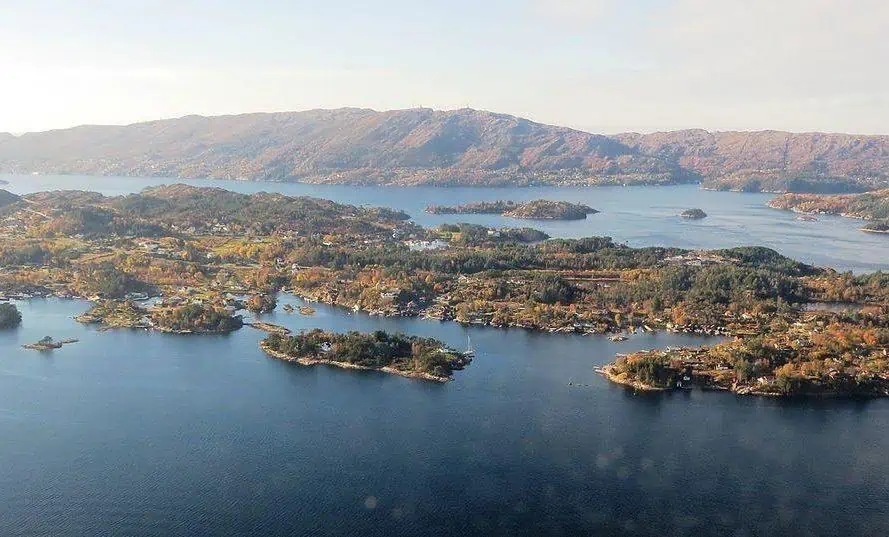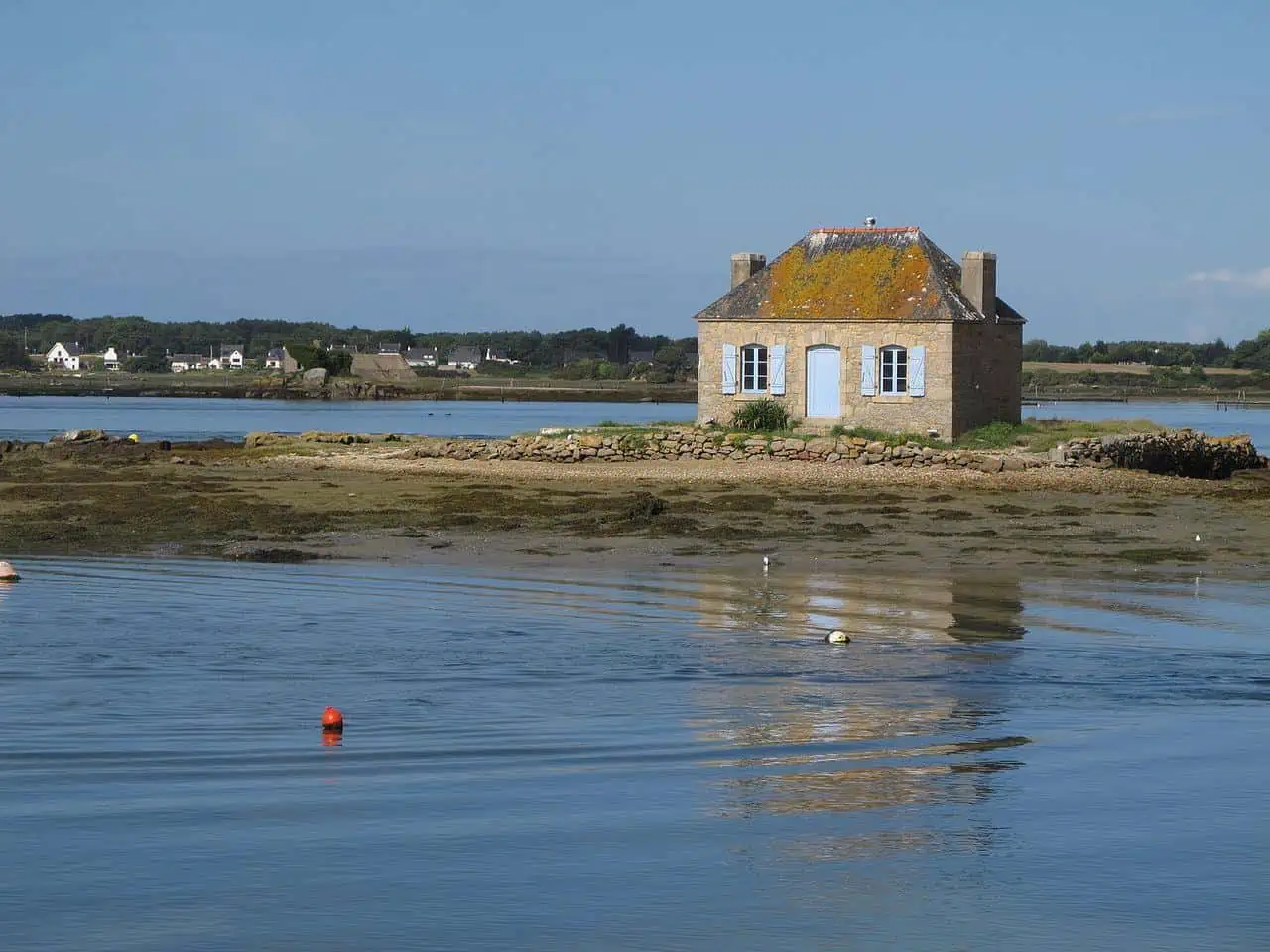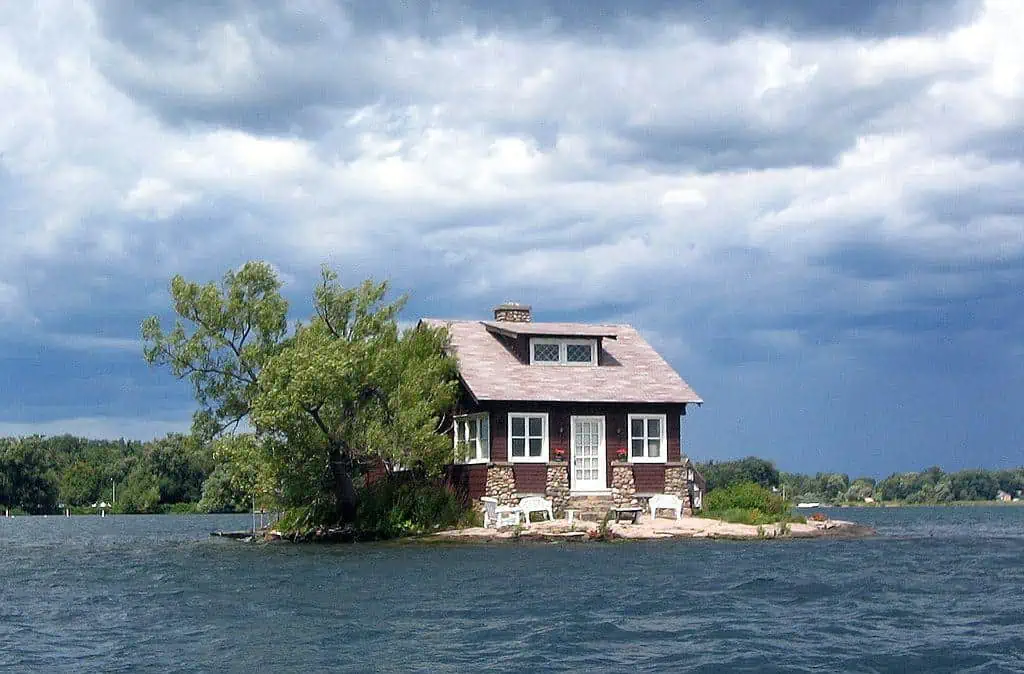
Nestled in the middle of a lake, surrounded by the vast emptiness of the ocean or even tucked away inside a river, islands take many forms and sizes, ranging from semi-continents to miniscule skerries. While there are plenty of claustrophobia inducing isles, some inhabited islands across the planet are in a league of their own, putting into a test what is actually the minimal landmass required for living.
The most remote among Honduras’ bay islands, Guanaja is a lush and mountainous speck of land, located about 70 kilometers off the mainland. This unspoiled nook is best known for its world-class diving, snorkeling and hiking options, nevertheless, it is also home to a pair of unusual oddities.
Nestled along Guanaja’s southern coastline are Bonacca Cay, one of the most densely populated islands on Earth, and Dunbar Rock, the latter of which is a ridiculously small rocky isle, almost completely covered by a privately owned resort. Originally built in 1998, the lavish complex started as a somewhat modest villa, and then doubled its size following a recent renovation. The 4 story and 15,000 square foot mansion now has 8 oceanside rooms with balconies overlooking the bay, as well as an infinity pool, a bar, a restaurant and most importantly, its own crafted private beach.
Dumbar Villa is located roughly 500 meters off the coast of Guanaja, and so, the only way in or out of this mini-island is by a short ferry ride from the nearby Sandy Bay, but before you rush into the pier, you’ll first have to be a registered guest to be welcomed on board.

The privately owned resort perching on Dunbar Rock
photography by: Colin and Sarah Northway/ Flickr
Encompassing a whopping 17,508 islands, Indonesia is by far the world’s largest archipelago nation. The country is home to three of the 10 largest islands across the globe, the most populous island in the world, and according to the U.N, also the world’s smallest officially recognized island, known as Simping.
Located on the western tip of Borneo Island, Singkawang is a predominantly Chinese city, with more than 70% of its population identifying as Han-Chinese. There is probably no better testament to its Chinese identity than its incalculable number of Buddhist and Confucianist places of worship, awarding it with the nickname the “City of Thousand Temples“.
An insanely tiny islet on the northern outskirts of Singkawang, Simping and its modest shrine might pale in comparison to city’s series of flamboyant golden pagodas, yet what it lacks in size and extravagance, it surely makes up for in its rather extreme proportions.
As of today, the 0.5-hectare island is no longer formally inhabited due to coastal erosion, but for centuries several families managed to live within its limited boundaries. Formerly named Kelapa Dua, the island is linked to the mainland by a pedestrian bridge and therefore, regularly frequented by Chinese worshipers who perform their ceremonial duties at its sacred premises.

Simping Island and its pedestrian bridge connecting to the mainland
photography by: Filbert Susanto/ Wikimedia Commons
It might come as a surprise, yet Norway has the second largest number of islands in the world, with a whopping 239,057 islands, isles and skerries, surpassed only by its neighboring Sweden. Despite its impressive runner up position, less than 10 percent of its islands are actually inhabited, many of which are merely a rocky islet with one or two homes.
Founded in 1070 AD by Olav Kyrre, the former Norwegian king, Bergen is the country’s second largest city and a gateway to some of Norway’s most spectacular fjords. Narrow and sandwiched between a pair of verdant mountainous banks, Bergen’s surrounding fjords are peppered with hundreds, if not thousands of pint-sized isles, with only a fraction of which being populated all year long.
While according to any available data, there is no straightforward answer to which of those islands is the smallest of all, one rocky islet, Søre Steinskjeret, is a leading contender. Tucked away in Raunefjorden, south of Bergen International Airport, the privately owned island barely exceeds 60 meters in diameter and has only one house, a tiny lawn, a couple of trees and two boat ramps, providing the sole way to the outside world.

The Raunefjorden and its numerous inhabited islets
photography by: Bjoertvedt/ Wikimedia Commons
Unlike inland rivers which are primarily affected by weather patterns, France’s Etel River is actually a ria, a coastal inlet whose water level fluctuates according to tidal variations. The river, which ultimately flows to the Atlantic Ocean, is dotted with dozens of islands that have changed form over time, but even more interestingly, shrink and grow every couple of hours as high and low tides take place.
Administrated as part of the Belz Commune and connected to the mainland by a bridge, Saint Cado is a small island that is home to a fishing village with which it shares its name. The medieval hamlet is a peaceful nook with white houses, stone monuments and a chapel, but as it turns out, Saint Cado is unexpectedly best-known for its little sidekick, the mind-bogglingly tiny islet of Nichtarguér.
The islet, which is slightly west of Saint Cado, is dominated by a single stone building with bluish windows and door. Constructed in 1894, Maison de Nichtarguér as it locally named, has been serving as the house of a caretaker of a local oyster farm for more than a century. While during low tide, the island measures about 100 meters in length, upon high tide its diameter shrinks to a staggering 25 meters, shorter than an average train wagon.

The isle of Nichtarguér and its iconic stone house
photography by: Donar Reiskoffer/ Wikimedia Commons
Stretching 80 kilometers along the St. Lawrence River, the Thousand Islands archipelago consists of 1,864 islands that are scattered across the US-Canada border which runs in the middle of the river. While the islands widely vary in size, there are apparently several criteria that determine which land mass can be officially regarded as one of the archipelago’s islands in the first place.
To be listed as part of the Thousand Islands, an island must have a minimum size of one square foot, serve as a habitat for two trees or more and protrude above the river surface all year long. Despite being almost seven billion times smaller than the world’s largest Island, Greenland, Hub Island, or as it is commonly known – Just Room Enough Island, follows all the previously mentioned guidelines and formally counts as one of the Thousand Islands.
Measuring a meager 310 m2 or 3,300 square feet, the isle was purchased by the Sizeland family somewhere in the 1950’s. Dreaming about their own private vacation home, the family constructed a single house that encompasses much of the island, and so, one wrong step may result in falling into the river. Dubbed as the world’s smallest inhabited island, the Just Room Enough Island was recently turned into a somewhat unconventional attraction among curious travelers in the region, some of whom come especially to witness its sheer littleness.

Just Room Enough Island, home to the Sizeland Family House
photography by: Omegatron/ Wikimedia Commons